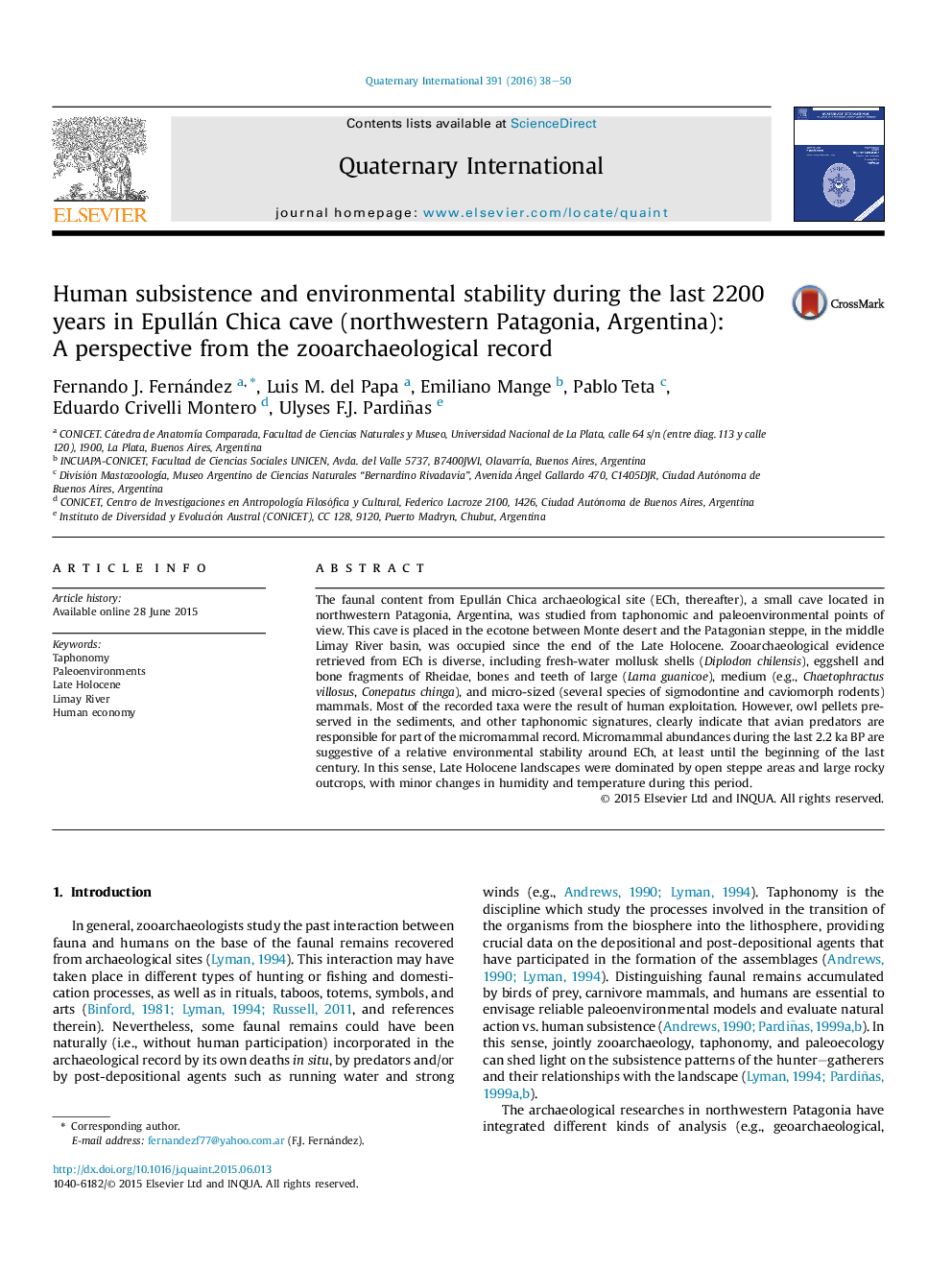| کد مقاله | کد نشریه | سال انتشار | مقاله انگلیسی | نسخه تمام متن |
|---|---|---|---|---|
| 1040415 | 1484107 | 2016 | 13 صفحه PDF | دانلود رایگان |

The faunal content from Epullán Chica archaeological site (ECh, thereafter), a small cave located in northwestern Patagonia, Argentina, was studied from taphonomic and paleoenvironmental points of view. This cave is placed in the ecotone between Monte desert and the Patagonian steppe, in the middle Limay River basin, was occupied since the end of the Late Holocene. Zooarchaeological evidence retrieved from ECh is diverse, including fresh-water mollusk shells (Diplodon chilensis), eggshell and bone fragments of Rheidae, bones and teeth of large (Lama guanicoe), medium (e.g., Chaetophractus villosus, Conepatus chinga), and micro-sized (several species of sigmodontine and caviomorph rodents) mammals. Most of the recorded taxa were the result of human exploitation. However, owl pellets preserved in the sediments, and other taphonomic signatures, clearly indicate that avian predators are responsible for part of the micromammal record. Micromammal abundances during the last 2.2 ka BP are suggestive of a relative environmental stability around ECh, at least until the beginning of the last century. In this sense, Late Holocene landscapes were dominated by open steppe areas and large rocky outcrops, with minor changes in humidity and temperature during this period.
Journal: Quaternary International - Volume 391, 11 January 2016, Pages 38–50